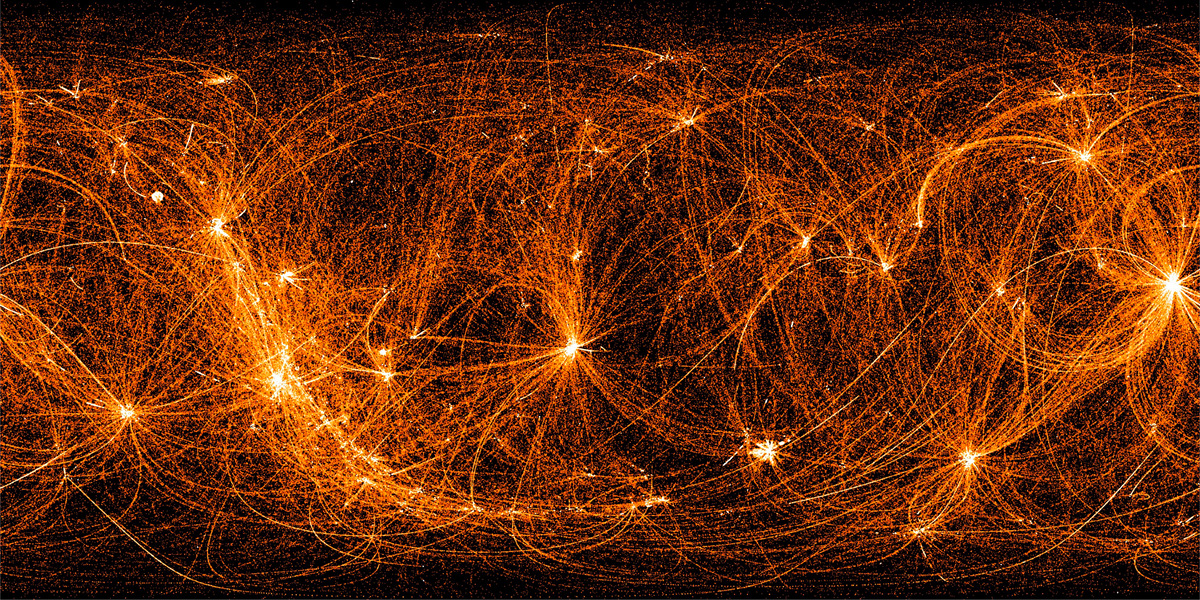中子星内部成分探测器夜间的探测图像
2019 June 1
晚上的中子星内部成分探测器
图片来源:NASA, NICER
作为国际空间站上的有效载荷,中子星内部构成探测器(NICER)每隔93分钟就会绕地球轨道行星地球轨道运行地球轨道上的宇宙X射线源。在夜间轨道运行期间,它的X射线探测器保持开启状态。因此,由中子星内部构成探测器的22个月数据绘制的全天空地图上,随着中子星内部构成探测器从一个目标到另一个目标的摆动,明亮的弧线被描绘出来。这些弧线往往聚集在NICER经常瞄准和监视的X射线天空中的突出亮点————脉冲星上。脉冲星是一种旋转的中子星,能发射出类似时钟的X射线脉冲。它们的计时非常精确,可以用于导航、确定航天器的速度和位置。这张NICER的X射线全图是以与天体赤道水平对称的坐标组成。
NICER at Night
Image Credit: NASA, NICER
Explanation: A payload on board the International Space Station, the Neutron star Interior Composition Explorer (NICER) twists and turns to track cosmic sources of X-rays as the station orbits planet Earth every 93 minutes. During orbit nighttime, its X-ray detectors remain on. So as NICER slews from target to target bright arcs and loops are traced across this all-sky map made from 22 months of NICER data. The arcs tend to converge on prominent bright spots, pulsars in the X-ray sky that NICER regularly targets and monitors. The pulsars are spinning neutron stars that emit clock-like pulses of X-rays. Their timing is so precise it can be used for navigation, determining spacecraft speed and position. This NICER X-ray, all-sky, map is composed in coordinates with the celestial equator horizontally across the center.

